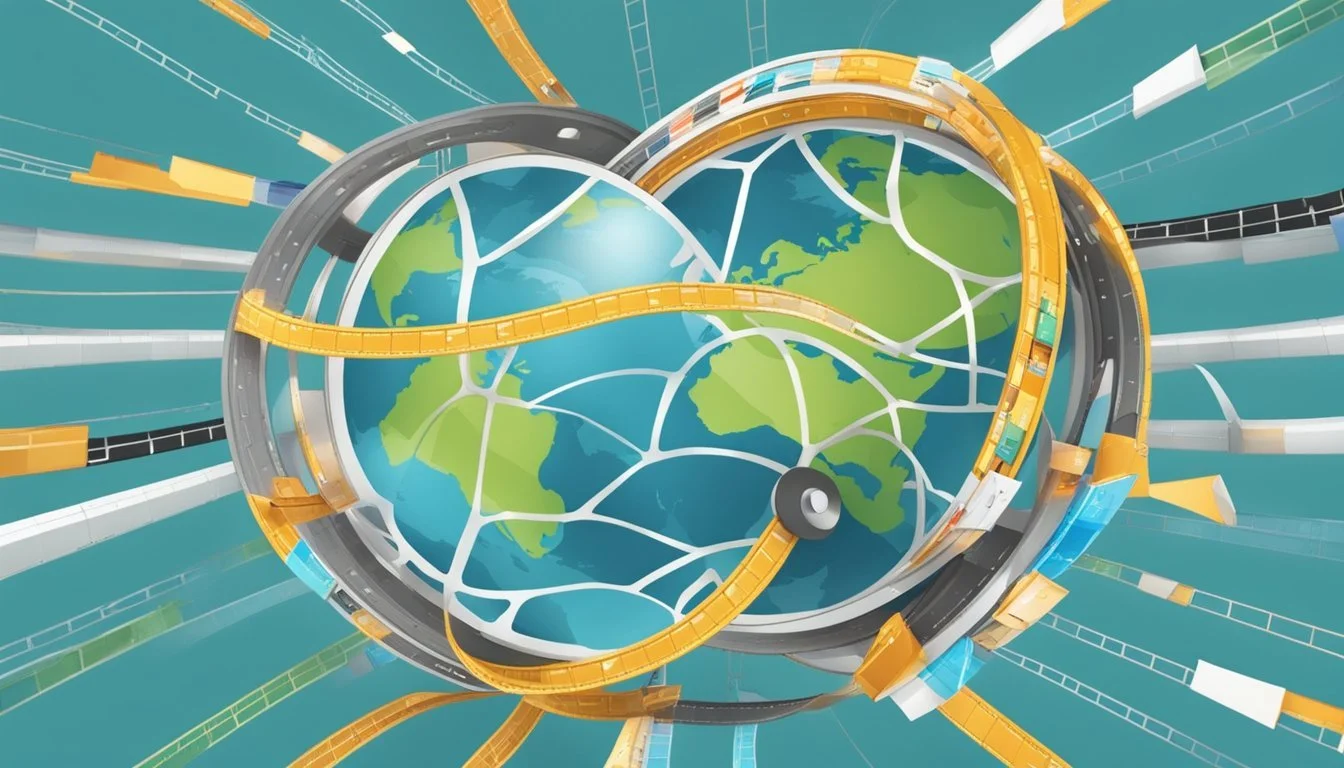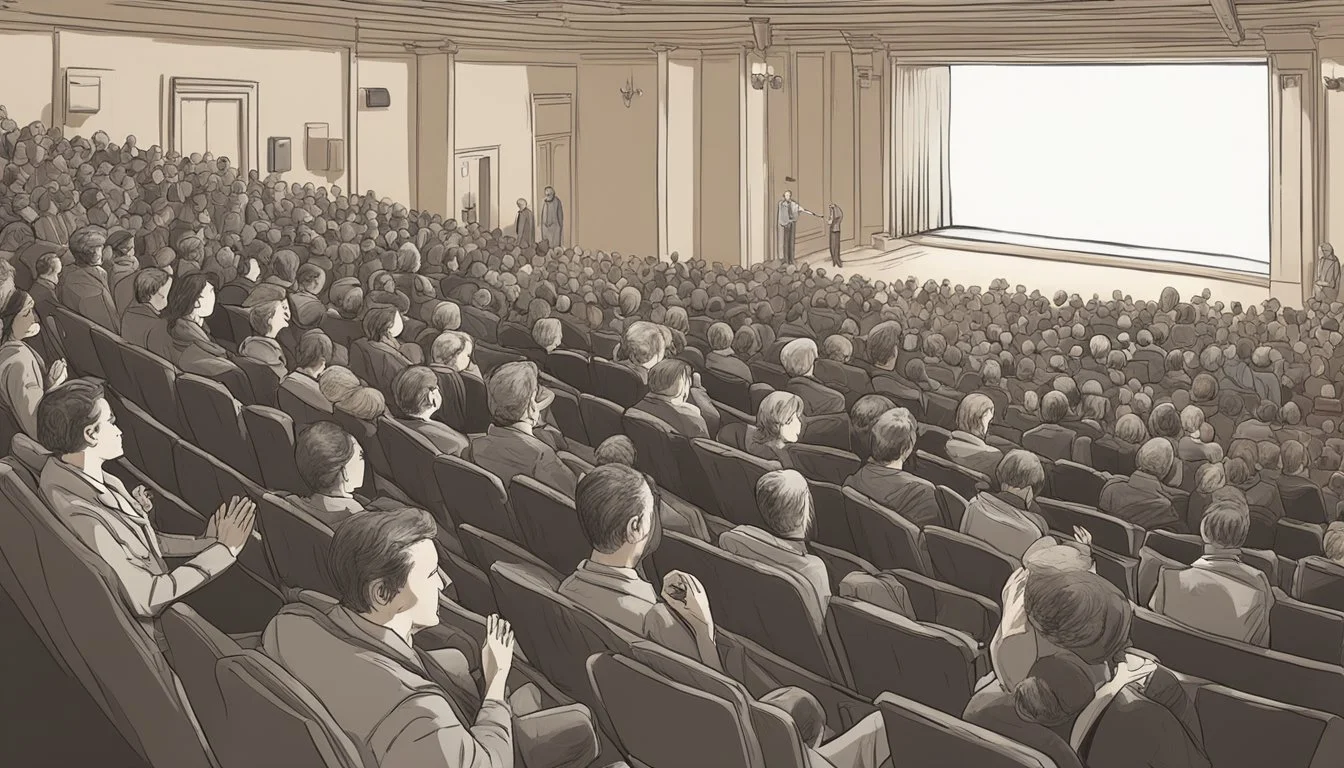Shocking Truths Unveiled: How Documentary Movies Are Changing the World
Documentary films offer a unique window into real-world stories, events, and people. These non-fiction movies capture slices of life, history, and human experience in ways that often surpass traditional storytelling. Documentary movies range from intimate character studies to sweeping historical epics, covering topics as diverse as wildlife, crime, music, and social issues.
Filmmakers use various techniques to bring their subjects to life, including interviews, archival footage, and observational filming. The best documentaries not only inform but also provoke thought and emotion, challenging viewers to see the world from new perspectives. Many have achieved critical acclaim, with some even winning prestigious awards like Oscars.
Streaming platforms have made documentaries more accessible than ever. Services like Netflix offer extensive libraries of documentary content, allowing viewers to explore a wide range of subjects from the comfort of their homes. This increased availability has contributed to a growing appreciation for the documentary form among audiences worldwide.
The Evolution of Documentary Films
Documentary films have undergone significant transformation since their inception. From early silent films to modern digital productions, the genre has expanded in both style and subject matter.
Early Documentary Film History
Robert J. Flaherty's "Nanook of the North" (1922) marked a pivotal moment in documentary filmmaking. This groundbreaking work depicted the life of an Inuit man and his family in the Canadian Arctic. Flaherty's approach combined authentic footage with staged scenes, establishing a template for future documentarians.
In the 1920s and 1930s, Soviet filmmakers like Dziga Vertov pushed the boundaries of the genre. Vertov's "Man with a Movie Camera" (1929) showcased innovative editing techniques and challenged traditional narrative structures.
John Grierson, a Scottish filmmaker, coined the term "documentary" in the 1930s. He championed the use of film as a tool for social change and education.
Key Developments in Cinéma Vérité
The 1960s saw the rise of cinéma vérité, a style emphasizing spontaneity and minimal interference from the filmmaker. This approach aimed to capture reality as it unfolded, often using handheld cameras and natural lighting.
French filmmakers Jean Rouch and Edgar Morin pioneered this style with "Chronicle of a Summer" (1961). The film blurred the lines between subject and filmmaker, incorporating interviews and self-reflection.
In the United States, directors like D.A. Pennebaker and the Maysles brothers adopted similar techniques. Pennebaker's "Don't Look Back" (1967) and the Maysles' "Grey Gardens" (1975) exemplified the intimate, observational style of American cinéma vérité.
Modern Documentary Filmmaking
The digital revolution of the late 20th and early 21st centuries dramatically changed documentary production. Affordable digital cameras and editing software made filmmaking more accessible to a wider range of creators.
Streaming platforms have provided new distribution channels for documentaries, leading to increased viewership and diverse subject matter. Series like "Planet Earth" (2006) showcase the potential of high-definition imagery in nature documentaries.
Modern documentarians often blend various styles and techniques. Films like "The Act of Killing" (2012) and "Waltz with Bashir" (2008) incorporate elements of animation and reenactment to explore complex themes. These innovations continue to push the boundaries of what defines a documentary film.
Genres and Styles
Documentary films encompass a wide range of topics and approaches. Filmmakers use different styles to explore various subjects, from criminal investigations to political issues and environmental concerns.
True Crime Documentaries
True crime documentaries delve into real-life criminal cases, often focusing on unsolved mysteries or controversial verdicts. These films typically combine interviews, archival footage, and reenactments to present a comprehensive view of the events.
Popular true crime documentaries include:
"Making a Murderer"
"The Jinx"
"Serial"
These productions often raise questions about the justice system and spark public debates. Filmmakers strive to present evidence objectively, allowing viewers to form their own conclusions about the cases.
Political Documentaries
Political documentaries examine government policies, elections, and social movements. They aim to inform viewers about complex political issues and sometimes advocate for specific causes.
Key elements of political documentaries:
Expert interviews
Historical footage
Data visualization
Notable examples include "The War Room" and "Fahrenheit 9/11". These films often cover topics related to the European Union, international relations, and domestic politics.
Political documentaries can influence public opinion and even impact policy decisions. They serve as important tools for civic engagement and political discourse.
Biographical Documentaries
Biographical documentaries chronicle the lives of notable individuals, from historical figures to contemporary celebrities. These films offer intimate portraits of their subjects, exploring personal struggles, achievements, and legacies.
Common techniques in biographical documentaries:
Archival footage
Personal interviews
Narration
Examples include "Amy" about singer Amy Winehouse and "RBG" about Justice Ruth Bader Ginsburg. Biographical documentaries often provide new insights into well-known personalities and highlight lesser-known aspects of their lives.
Nature and Wildlife Documentaries
Nature documentaries showcase the beauty and complexity of the natural world. They often feature stunning visuals of landscapes, animals, and ecosystems.
David Attenborough, a renowned naturalist and broadcaster, has narrated many iconic nature documentaries. His work includes series like "Planet Earth" and "Blue Planet".
These films:
Educate viewers about biodiversity
Raise awareness about environmental issues
Employ advanced filming techniques
Nature documentaries often require extensive planning and patience to capture rare moments in the wild. They play a crucial role in fostering environmental awareness and conservation efforts.
Social Issue Documentaries
Social issue documentaries address pressing societal problems such as poverty, discrimination, and healthcare. These films aim to raise awareness and inspire action on important topics.
Examples of social issues covered:
Income inequality
Climate change
Human rights
Filmmakers often use personal stories to humanize complex issues. They may combine statistical data with individual accounts to present a comprehensive view of the subject.
Social issue documentaries can lead to public debates and policy changes. They serve as powerful tools for advocacy groups and grassroots movements seeking to effect social change.
Notable Documentary Filmmakers
Documentary filmmaking has evolved significantly over the decades, shaped by visionary directors who have pushed the boundaries of the genre. These filmmakers have brought important stories to light and challenged audiences to see the world differently.
Pioneers in Documentary Filmmaking
Robert Flaherty is often credited as the father of documentary film with his 1922 work "Nanook of the North." This groundbreaking film set the stage for future documentarians.
Frederick Wiseman, known for his observational style, has produced over 40 documentaries since the 1960s. His films offer unfiltered looks at institutions and communities.
The Maysles brothers, Albert and David, helped develop the "direct cinema" movement. Their 1975 film "Grey Gardens" remains a cult classic.
Contemporary Voices in Documentary Cinema
Errol Morris revolutionized documentary techniques with his use of reenactments and stylized interviews. His 1988 film "The Thin Blue Line" led to the exoneration of a man wrongly convicted of murder.
Michael Moore brought a confrontational approach to documentaries. His films like "Bowling for Columbine" and "Fahrenheit 9/11" sparked intense debates on social issues.
Steve James gained recognition with "Hoop Dreams" in 1994. He continues to produce impactful films on American life and social justice.
Adam Curtis is known for his thought-provoking documentaries that blend archival footage and music. His works often explore power structures and societal shifts.
James Marsh won an Oscar for "Man on Wire" in 2008. He skillfully balances entertainment and information in his films.
Documentary Techniques and Production
Documentary filmmaking employs a
Groundbreaking Documentary Films
Documentary films have the power to challenge perspectives, expose hidden truths, and spark social change. Several groundbreaking works have redefined the genre and left lasting impacts on audiences worldwide.
Films That Changed the Industry
"The Act of Killing" (2012) revolutionized documentary filmmaking by having perpetrators of Indonesian genocide reenact their crimes. This innovative approach blurred the lines between reality and fiction, forcing viewers to confront uncomfortable truths.
"The Thin Blue Line" (1988) used stylized reenactments and a Philip Glass score to investigate a murder case. Errol Morris's film ultimately led to the exoneration of a wrongly convicted man, demonstrating documentaries' potential to effect real-world change.
"Sans Soleil" (1983) pushed boundaries with its experimental style. Chris Marker's film blended travelogue, philosophy, and fiction, challenging traditional documentary conventions and influencing future filmmakers.
Culturally Significant Documentaries
"Blackfish" (2013) exposed the treatment of orcas in captivity, particularly at SeaWorld. The film sparked public outrage and led to significant policy changes in the marine park industry.
"Shoah" (1985) is a landmark Holocaust documentary. Claude Lanzmann's nine-hour film relies solely on interviews with survivors, perpetrators, and witnesses, creating a powerful oral history of the genocide.
"For Sama" (2019) offers a deeply personal account of the Syrian conflict. Filmed over five years, it provides a harrowing yet intimate look at life in war-torn Aleppo through a mother's eyes.
Award-Winning Choices
"Harlan County, USA" (1976) won an Academy Award for its portrayal of a Kentucky coal miners' strike. Barbara Kopple's film set a new standard for immersive, observational documentaries.
"The Cove" (2009) used covert filming techniques to expose dolphin hunting practices in Japan. Its thrilling approach and environmental message earned it an Oscar and widespread acclaim.
"Citizenfour" (2014) won Laura Poitras an Academy Award for her real-time documentation of Edward Snowden's NSA leaks. The film raised crucial questions about privacy and government surveillance.
Platforms and Distribution
Documentary distribution has evolved with the digital age, offering filmmakers diverse avenues to reach audiences. Streaming platforms and niche services have expanded opportunities for documentary exposure and monetization.
Mainstream Streaming Services
Netflix leads the charge in documentary distribution, investing heavily in original productions and acquisitions. The platform's global reach provides unprecedented exposure for documentaries. Amazon Prime Video also offers a substantial documentary library, mixing original content with licensed films.
Google's YouTube hosts a vast array of free documentaries, while also providing a paid platform for filmmakers through YouTube Premium. Facebook Watch has entered the documentary space, focusing on shorter-form content and series.
These major players offer filmmakers potential for wide audience reach but often come with competitive selection processes and complex licensing agreements.
Independent and Niche Platforms
Specialized streaming services cater specifically to documentary enthusiasts. Platforms like Docurama and CuriosityStream focus exclusively on non-fiction content, providing curated selections for discerning viewers.
Film festivals remain crucial for independent documentaries, offering premiere opportunities and industry connections. Virtual festival platforms have expanded access for both filmmakers and audiences.
Educational distributors like Kanopy and Alexander Street target academic institutions, providing a valuable market for issue-driven documentaries. Community screenings and public television continue to play important roles in grassroots distribution.
VOD platforms such as Vimeo On Demand allow filmmakers to self-distribute, retaining more control over their work and revenue. These alternatives often provide more favorable terms for independent creators.
Audience Engagement and Impact
Documentary films have the power to captivate viewers and drive real-world change. Successful documentaries cultivate dedicated audiences and serve as catalysts for social and political action.
Cultivating a Dedicated Viewership
Documentary filmmakers employ various strategies to engage audiences. Social media platforms allow directors to share behind-the-scenes content and interact directly with viewers. Film festivals provide opportunities to build buzz and connect with passionate cinephiles.
Many documentaries now include companion websites with additional resources and ways for viewers to get involved. Interactive elements like Q&A sessions with filmmakers or subjects can deepen audience investment.
Targeted outreach to relevant communities and organizations helps documentaries find their core audience. Word-of-mouth recommendations from engaged viewers often prove crucial for independent films with limited marketing budgets.
Documentaries as Tools for Change
Political exposés and social issue documentaries aim to inform and mobilize viewers. Films like "An Inconvenient Truth" have sparked public debates and policy shifts on critical topics.
Documentaries partner with advocacy groups to organize screenings and action campaigns. These collaborations amplify a film's message and provide concrete ways for viewers to make a difference.
Impact producers work to maximize a documentary's real-world influence. They track metrics like policy changes, shifts in public opinion, and fundraising for featured causes.
Some documentaries inspire grassroots movements or nonprofit organizations dedicated to the film's central issue. This lasting engagement extends a documentary's impact far beyond its initial release.
Challenges and the Future of Documentary Movies
Documentary filmmaking faces significant hurdles but also exciting opportunities ahead. New technologies and distribution models are reshaping the landscape, even as funding remains a persistent challenge.
Funding and Financial Challenges
Securing funding continues to be a major obstacle for documentary filmmakers. Traditional sources like grants and broadcaster commissions have become more competitive. Many documentarians now turn to crowdfunding platforms to finance their projects.
The COVID-19 pandemic further strained budgets, with production costs rising due to safety protocols. Risk-averse financiers and distributors have tightened purse strings, especially for more controversial or niche topics.
Theater closures eliminated a key revenue stream, forcing filmmakers to adapt to streaming and video-on-demand models. While these platforms offer wider reach, monetization can be challenging.
Innovations and Emerging Trends
Virtual reality and augmented reality are opening new frontiers for immersive documentary experiences. Some filmmakers are experimenting with interactive elements, allowing viewers to engage with content in novel ways.
Streaming services have increased demand for documentary content, creating opportunities for both short-form and series formats. This has led to more diverse voices and subjects reaching global audiences.
Mobile filmmaking tools have democratized production, enabling a new generation of documentarians to tell stories with minimal equipment. Social media platforms now serve as both distribution channels and sources of real-time documentary footage.
AI-powered editing tools are streamlining post-production workflows, potentially reducing costs and time-to-market for documentary projects.





